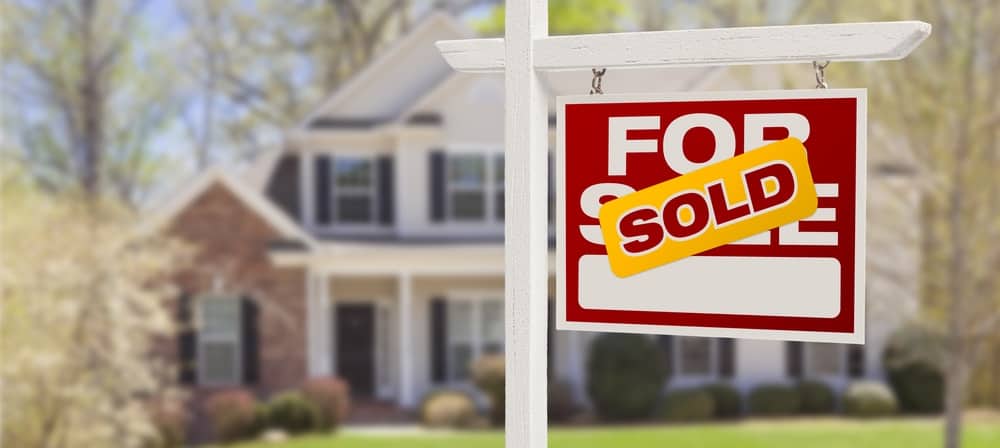My wife wants a new house. And the one she describes is not unlike those you think of when someone mentions the “American dream.”
We’re not white-picket-fence people by any means. But there’s a certain charm to a wraparound porch with a two-person swing out front, a large, flat backyard with a fence for the dogs and a friendly neighborhood where people greet you with warm hellos.
It’s idyllic, and I’m sure it’s an image most of you have envisioned in some form or another at some point. It’s also a dream that was tarnished by the Great Recession and the subprime mortgage fiasco that preceded it.
As a result, many people — myself included — bailed on the housing market completely when their investments and equity evaporated. Renting quickly became the new norm, even among single-family homes.
But while the doom-and-gloom headlines still reign over the housing market, there are signs in recent economic data that the American dream of homeownership could be making a comeback.
There’s also a growing threat to renters that could spur a return to ownership sooner than many are expecting.
And here’s why…
The Rent Is Too Damn High!
Inflation is a dual-edged sword. On one hand, it’s a sign of a growing economy as employment and corporate profits grow. On the other hand, inflation drives prices higher across the board, undermining consumers’ ability to buy the things they want and need — particularly if salaries aren’t keeping pace.
The latest U.S. Consumer Price Report reveals that renters are being hit particularly hard. Between rising gasoline prices and soaring rent, the December Consumer Price Index saw its largest year-over-year increase in two and a half years. For its part, gasoline prices added 3% on the month, after climbing 2.7% in November. Rental costs alone rose 0.3% in December, leading to a 4% rise last year.
In fact, according to ATTOM Data Solutions, owner of the U.S.’ largest fused property database, it is now more affordable to own a home than rent in 66% of U.S. housing markets. In other words, renters are going to realize sooner rather than later that homeownership could make a significant impact on their tightening budgets.
Last Chance for Low Mortgage Rates?
Unfortunately for renters, the mortgage situation isn’t getting any better. For one, borrowing costs spiked nearly a full percentage point following the November election. And while average mortgage rates for 2016 were the lowest on record, the average rate now for a 30-year fixed mortgage is north of 4% (roughly 4.19% as of this writing). Furthermore, analysts are projecting average rates for 2017 to come in at 4.5%.
And we’ve just touched the tip of the iceberg. The Federal Reserve already raised interest rates at the end of last year, and there is a buzz on the Street that Fed Chair Janet Yellen and Company may hike rates again in March in response to January’s solid employment data and the aforementioned rise in consumer prices (i.e., inflation). All of which are sure to push mortgage rates even higher.
The Housing Market That Inflation Built
In a bid to race against rising mortgage rates, Americans returned to the housing market in droves last year — relatively speaking. Data from the National Association of Realtors (NAR) shows that 5.45 million homes were sold in 2016 — the highest total since 2006.
And that sentiment has yet to dry up. In the latest University of Michigan Consumer Sentiment Survey, 1 in 5 respondents (a 20-year high) said that now was a good time to buy a home due to rising mortgage rates.
The influx of homebuyers has had a significant impact on two key factors for the housing market. First, home prices are rising across the board, with the S&P/CoreLogic Case-Shiller 20-City Index adding 5.3% year-over-year in November and accelerating from October’s 5.1% increase. Rising home prices could certainly make owning a home more attractive than renting due to the promise of equity and borrowing capacity for homeowners.
Second, higher home prices offer a larger return on investment for homebuilders. And this is where investors should start to take note of the homebuilder sector.
NAR data shows that the inventory of existing homes is at its lowest level since 1999, with only about 1.65 million existing homes available for sale at the end of December. In fact, inventories have fallen year-over-year for 19 straight months.
Investing in Homebuilders
In short, demand is strong, inventories are getting squeezed and home prices (and mortgage rates) are rising. The stage is set for a rally, and another interest-rate hike from the Fed could push the housing market over the top.
Furthermore, my colleague Paul is looking for the housing sector to shoot higher on the backs of millennials rushing into the market over the next several years as first-time homebuyers.
One way to take advantage of the situation is to invest in the SPDR S&P Homebuilders ETF (NYSE Arca: XHB).
This exchange-traded fund is currently hovering near support at $34 and could see some volatility over the next week as several major homebuilders report quarterly results. But if early results from D.R. Horton are any indication — the company reported its highest growth in orders in more than a year — we could already be seeing the leading edge of the housing market’s return.
Until next time, good trading!
Regards,
Joseph Hargett

Assistant Managing Editor, Banyan Hill



